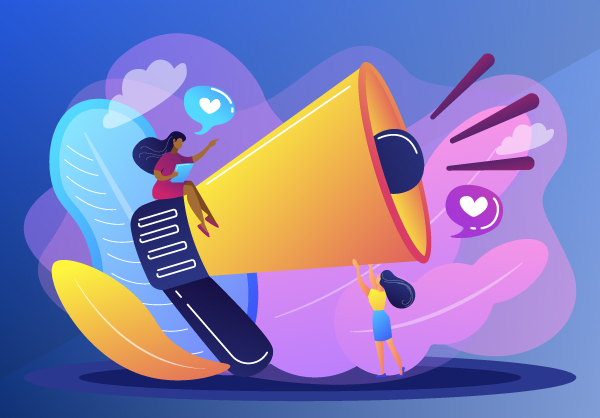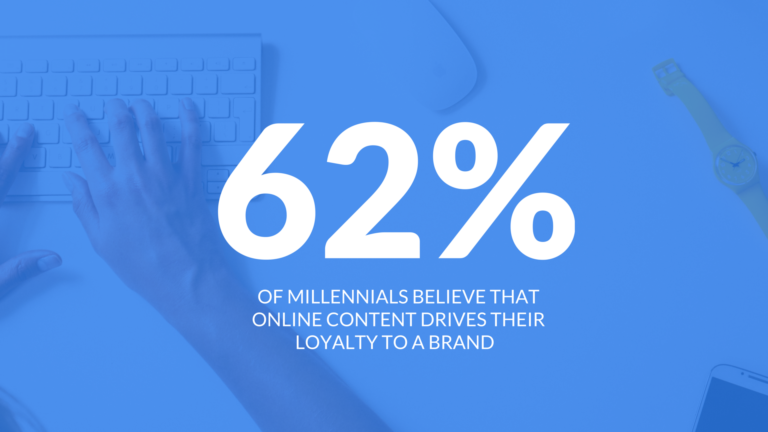Understanding One Simple Word Will Help You Build Brand Loyalty
There are two ways to make more money in any business: You can grow your customer base by getting new people to buy or use your product, OR you can sell more of your products and services to your existing customers. While the former is an exciting prospect, the latter (selling more to existing customers) is cheaper and better for the long-term growth of your company. But, in an increasingly competitive world, how do you build brand loyalty? In all that I’ve read and studied, the one word that shows up over and over again is CONSISTENCY…it feels so good to write that I have to write it again, consistency, consistency, consistency will change your relationships with your customers indefinitely.
Image Source: Women of Color in Tech
In the digital world, consistency often translates to “Always on, always with you”, that is, being there for the customer in their moment of need, whenever that moment of need happens to be. But what is consistency really?
Let’s start with what consistency is NOT:
- Doing the same thing and expecting a different result
- Refusing to change because it’s easier to keep things the way they are
- Conformity to old patterns or even industry standards
- Something that happens overnight
- An excuse to build a brand that is boring and uninspired
So what IS consistency?
- Being reliable in meeting customer needs
- Building TRUST (with a capital “T”) with your customers
- Taking ownership of every aspect of the business from marketing to support
- Understanding that your business is not perfect, and that winning customers means continuous improvement
- The single most important factor in winning heart and mindshare
Promises, Prose, and Presence the Three P’s of Consistency
Promises – “A promise made is a debt unpaid” – Robert W. Service
This “P” rests on two simple questions: What is your brand promise? AND Are you keeping your brand promise? When you communicate your brand’s promise, you are entering into a commitment with your customers to solve some problem (or perceived problem) in their lives. When your customer comes to you, dollars in hand, they are trusting you to deliver on that promise. While there will be pitfalls along the way (massive changes in technology, operating challenges, etc.), your ability to consistently deliver on promises made will ensure that you are where the customer turns in their moment of need. They will turn to you, and you alone, because they trust you. Over time, these business transactions come to form a lasting relationship that means satisfaction for the customer, and income for your business.
Prose – “The difference between the right word and the almost right word is the difference between lightning and a lightning bug.” – Mark Twain
I’m cheating a bit, by calling this a “P”, but Prose is about Communication. How are you communicating the value of what you deliver to your customers? Is your messaging and marketing consistent with your brand? Are you able to be there for the customer in their channel of choice, be it mobile, social, phone, or web and email? Acquiring customers is just the first step, keeping them, and keeping them happy means constant, consistent communication.
Statistic Source: NewsCred 2015
In order to build a consistent marketing program, you have to start with a strategy. Your communications strategy should include detailed information about who the core customer is, what their motivations are, and metrics for measuring how well you are meeting their needs – not just vanity metrics that show how awesome you are at shouting about what you do. You should create data-driven personas, based on real customers, their behaviors, and include data about how well they convert. While personas are useful, internal marketing teams often rely too heavily on thin, marketing-only personas, while disregarding what their actual customers care about. (BTW, if you’re not talking to your actual customers, you’re doing it wrong. Although it can be pricey, it’s a worthy investment.) Our own Mike King has written extensively about the value that search-based personas bring to every aspect of the business. Additionally, a strategy will help you more easily build a business case when you are competing internally for $cash$money$.
The other clear advantage of having a strategy, is that it will ensure that everyone is singing the same tune. Too often, and especially in very large organizations, messaging changes from department to department. Brands become disjointed and indistinguishable from the essence of the brand. If you ask two different people in the same department what’s going on, they can’t tell you. Having a repository of centralized brand assets, that include your strategy, voice and tone documentation, and image assets will help everyone clearly and consistency communicate your brand’s value.
Presence – “His entire presence was like gravity, impossible to forget, possible to believe in…” – Shannon A. Thompson
Presence is really about the experience that your customers have when they interact with your brand. While experience is all the buzz around digital town, experience is just a synonym for how you treat people, and how they feel when they are in the presence of your brand. With your brand, you have the tremendous power to inspire, to activate, and to engage: “With all of your power, what would you do?”
Regardless of what channels you use to interact with your customers, they are relying on you to fulfill some need, and that interaction doesn’t stop when they purchase. Your support team is your first line of defense in earning customers, and your last line of defense in keeping them. If you want to inspire brand loyalty, engage your customer success teams early and often. Your support team will have valuable data about customer complaints, feature requests, and even praise. Talk to support, they are the ones who talk to your customers.
If you don’t have support, even if you are very small, start providing avenues for your customers to communicate with you. Leveraging Twitter is a great way to make it easy for people to get in touch with you. There are also a lot of new support tools that you can use to add this interactivity to your site, some examples include:
- Chatra
- LiveChat
- InstantChat.io
These solutions are often easily integrated into sites with just a few short lines of code, and having used Chatra myself, I can attest to the fact that the mobile app works like charm! When someone interacts with the chat box on my site, I get a text notification on my smartphone. It’s easy, it’s seamless, and it means that I am always available to the customer. Many companies that have grown to colossal size, Amazon and Zappos among them, became beloved by customers by having consistent, easy, and reliable customer service.
BONUS P: Prime Example
Amazon Prime, is literally one of the best things to ever happen to me, to all of us really. To paraphrase Wil Reynolds at a recent #MozTalk on Building Brand Loyalty – “I use Amazon Prime, even though it is more expensive than other shopping options because I know that my items will consistently arrive within two days, and exactly as I ordered them.” AND, even if they don’t I know that I can count on Amazon to make things right.
Brand Loyalty rests on two simple questions: Can you get consistent? AND Can you stay consistent?
- 3 Simple Steps to Building Brand Loyalty - April 22, 2016








